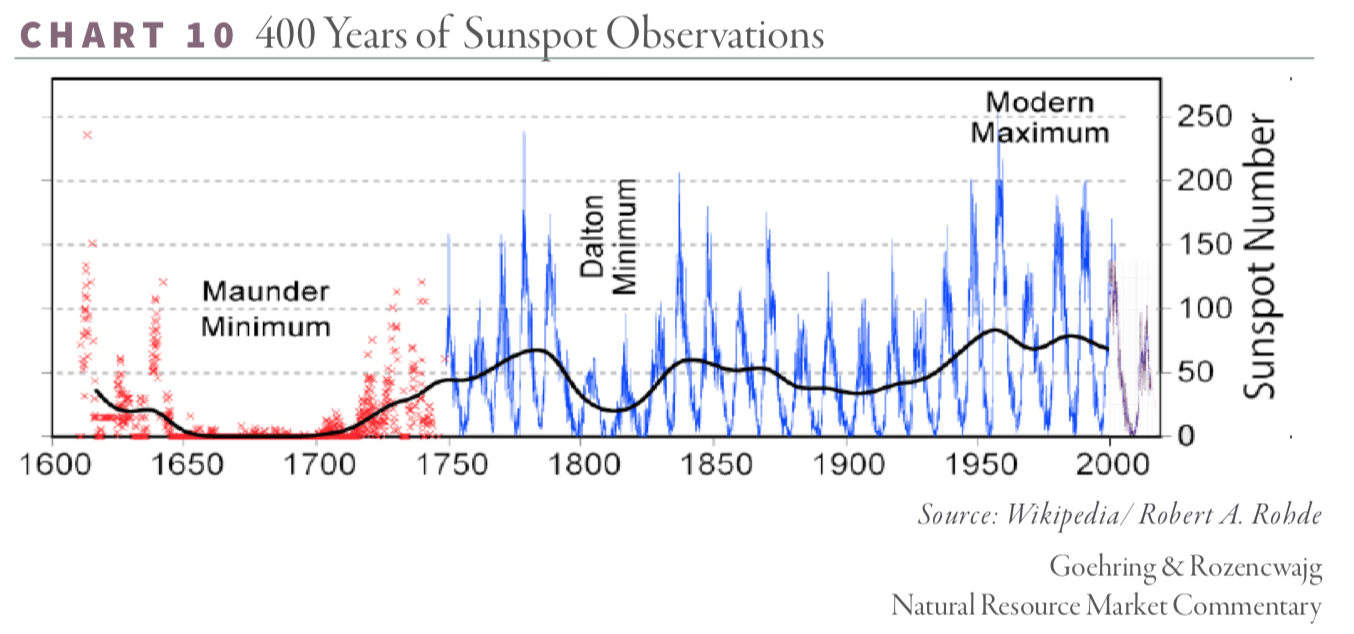The Coming Ice Age
Greta Thunberg, at the tender age of 16, has become the voice of global warming, climate change, environmentalism, or whatever it’s being called this news cycle. She’s TIME’s person of the year, annoying the President of the United States to distraction. Mr. Trump believes he is the person of the year, every year. "So ridiculous. Greta must work on her Anger Management problem, then go to a good old fashioned movie with a friend! Chill Greta, Chill!" Trump wrote.
Instead of chilling, the young activist’s public statements consistently communicate a few key points:
The planet is warming, we are responsible, and we need to fix it.
Hope is fine, but it is pointless without action.
Economic concerns are irrelevant in the face of collapsing ecosystems.
If we do not fix this, future generations will remember us for our failures.
There are people who study the weather to make money on climate trends and what it will mean for the commodity markets. Leigh Goehring and Adam Rozencwaig (@gorozen) are in such a business. In their Q1 Commentary Messrs. Goehring and Rozencwaig make the point that corn yields have risen seven-fold while average temperatures have increased over the same 80-year period.
And while CO2 concentrations have increased, causing Ms. Thornberg to lose sleep, “one cannot help but notice that a large part of the warming trend over the last 120 years took place prior to 1950, a period where CO2 concentrations in the earth’s atmosphere remained relatively low,” wrote the natural resource investing pair.
While Greta claims warming is the fault of humans, @gozen believe, and invest money based upon, a different point of view: “we put forward our belief that we are on the cusp of a major change in weather patterns. We believe global weather patterns are influenced by solar activity and our research tells us we are entering into a long period of declining energy released by the sun.”
Ms. Thornberg is merely acting human. As Matt Lampert wrote in the July edition of The Socionomist, “humans, as they do in financial asset manias, are linearly extrapolating a phenomenon just as it’s reaching its natural peak.”
If Goehring and Rozencwaig are correct, sunspot activity has been very high, making the climate warmer. But that is beginning to change. Sunspot activity is decreasing and colder weather is on its way.
The sun’s magnetic field reverses its polarity every eleven years, causing sunspot activity to peak and trough predictably. But not all peaks and troughs are the same. The Maunder Minimum had “minimal sunspot activity and occurred between 1645 to 1715 in conjunction with the second half of the Little Ice Age, a period of intense cold which lasted from approximately 1300 to about 1850,” according to @gorozen.
The Modern Maxium began at the turn of the century and continues to this day, giving Al Gore, Tom Steyer and Greta something to worry about. But, while Greta enjoys her 15 minutes of fame, “The 24th sunspot cycle began in 2008, peaked in 2014 and has most likely ended as we write today. Sunspot activity has declined significantly over the previous two cycles. Although open to debate, many sunspot observers believe that sunspot-cycle 23 will have ended up being the last sunspot cycle of the Modern Maximum cycle.”
The guys at @gorozen wrote,
There is mounting evidence indicating we are entering a potential period of very low sunspot activity, caused by a confluence of overlapping Gleissberg and Suess-DeVries Cycles. If this is indeed the case, the impact on the earth’s climate and by extension growing conditions could be material.
High sunspot activity and increased magnetic output serve to deflect cosmic rays, hindering cloud formation. Low activity does just the opposite.
So, the worst thing politicians could do is use the ham hand of government to hinder the exploration and extraction of fossil fuels, because we are going to need to burn something to stay warm. These cold eras also feature large increases in volcanic activity. The @gorzen report anticipates increased volcanic activity over the next two decades. This increase looks to have already begun.
“Commodity price spikes in the 1970s coincided with a huge advance in the environmental movement,” Alan Hall wrote in the July Socionomist. “Will history rhyme again? We will keep an eye on commodity prices, our bellwether for environmentalism.”
Goehring and Rozencwaig believe grain, oil, and metals markets are on the verge of a huge bull market, given the lack of sunspot activity. Politicians pandering to youth with new regulations will leave all of us out in the cold.







